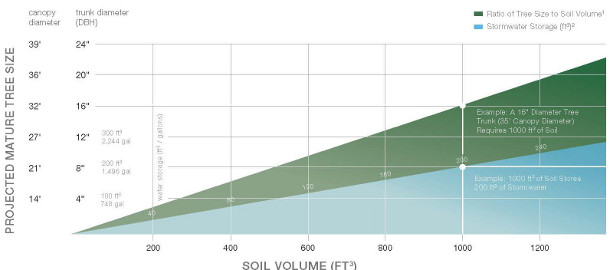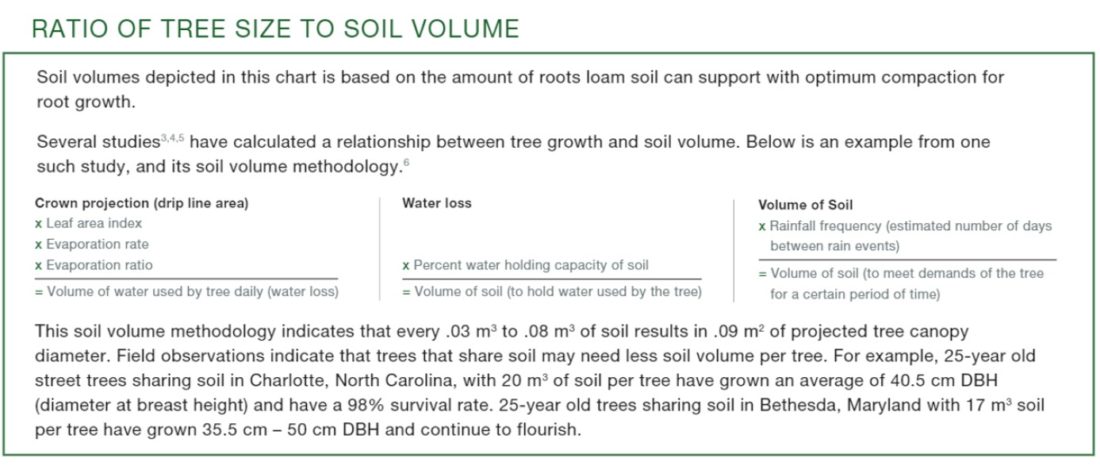We have a lot of resources about implementing minimum soil volumes for urban trees on this blog. Recently we’ve updated our list of municipalities that have a minimum soil volume standard.
Trees need an adequate volume of root, oxygen-rich soil to thrive, and minimum soil volume policies are a powerful tool for arborists and other advocates to leverage better growing conditions for trees, especially in urban areas.
As you’re sorting through all this information, we thought it would be helpful to share what we recommend as far as minimum soil volumes for urban trees.
Based on the work of James Urban, FASLA, and others, we advise designers who we work with to provide 1,000 cubic feet (28 cubic meters) of soil per tree. You can do slightly less if the soil is being shared by two trees. There are some small container studies that show these results, more research needs to be done to further prove this notion.
How large and robustly trees grow depends on a variety of factors including species, soil quality, site hydrology, and more. But we do know, definitively, that there is a ratio between the amount of available soil and the size of the tree. Speaking generally, you can expect that a tree receiving 1,000 cubic feet of soil will reach about 16″ in diameter and have a 32′ canopy.
1,000 cubic feet of soil per tree would make an extraordinary impact on our urban tree canopy cover statistics. While this recommendation is a great number to aim for, the fact remains that few city policies are this ambitious. Ontario is leading the charge here, with Toronto, Markham, Kitchener, and Oakville all mandating 30 cubic meters – just over 1,000 cubic feet – of soil per street tree. These policies call for some extra planning, and for approaching infrastructure projects differently, but this would also have a huge impact on reducing combined sewer overflows, flooding, and non-point source pollution, because 1,000 cubic feet of a bioretention soil can conservatively hold about 200 cubic feet of water.
Trees and soil have huge implications for on-site stormwater management and low impact development. Wherever possible, we encourage people to think of the two together and to integrate trees and soil in to larger city policy. In addition to the practical side of this (trees and soil can keep a lot of water from even entering the sewer system), there is also an economic one. There tends to be a lot more money for stormwater-related projects. This is an area where trees and soils are typically undervalued – if they are considered at all – yet their impact can be tremendous. Consider the role of trees and plants in bioretention (improving dissolved phosphorous retention, dissolved nitrogen retention) and what factors affect vegetation performance, and the stormwater quality benefits and quantity and rate control benefits of bioretention with trees in uncompacted soil. There is huge opportunity here.
We know that there are a lot of factors that affect how much rooting space is available to trees on any given site. But if you’re looking for our recommendation on what soil volumes to shoot for when designing for urban trees, start with 1,000 cubic feet of soil and see how close you can get.








Leave Your Comment